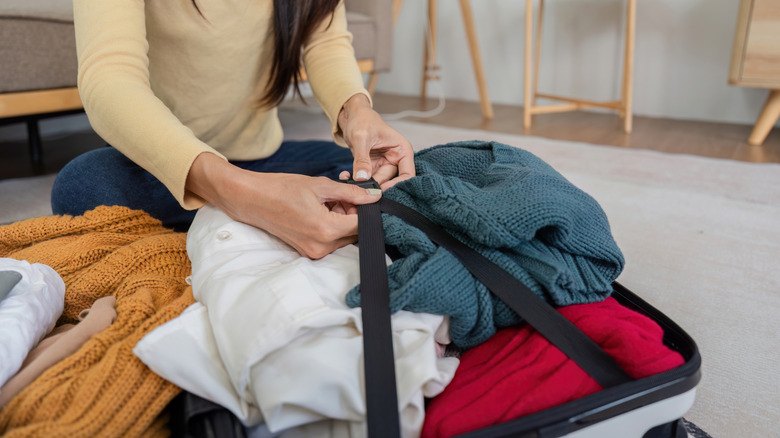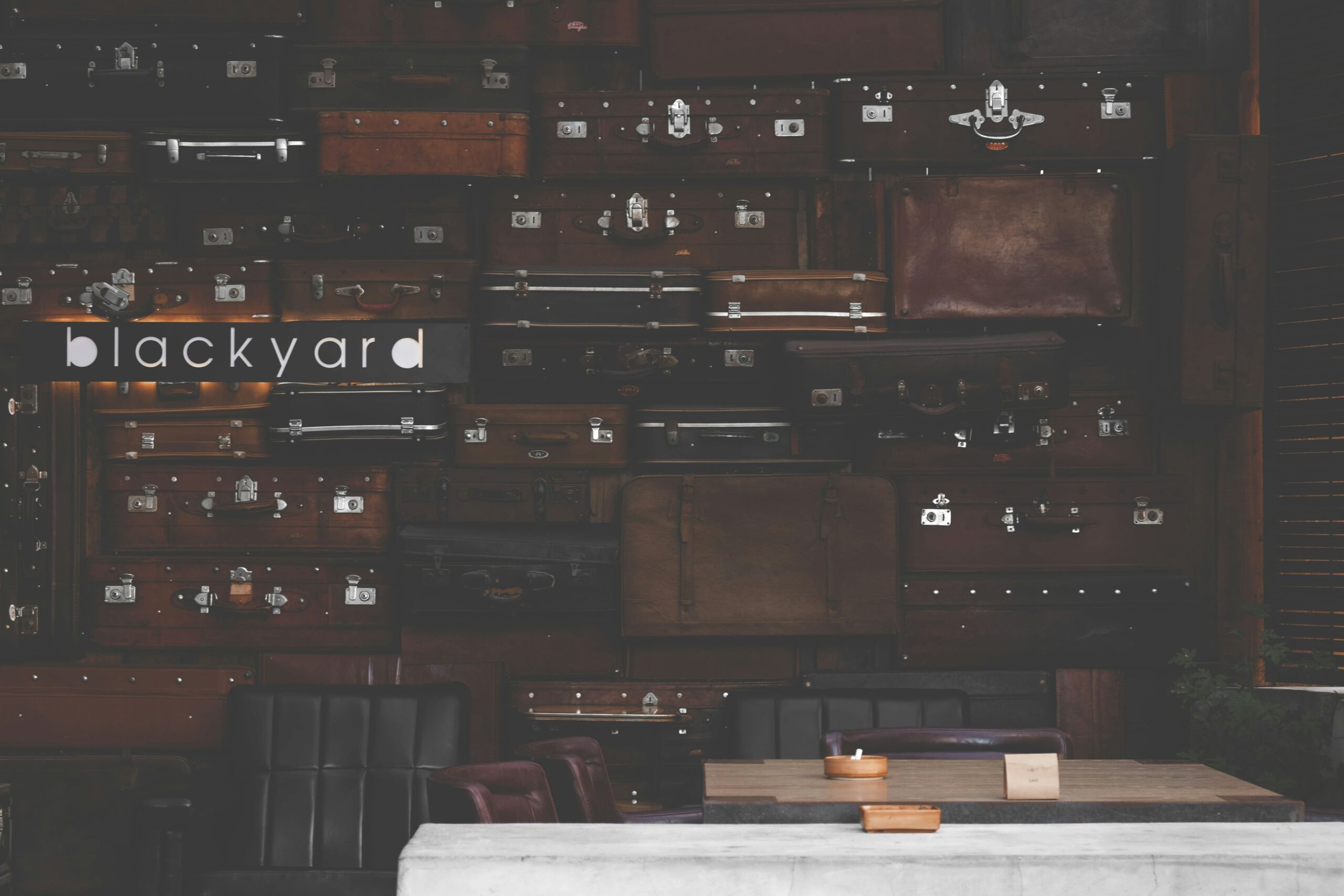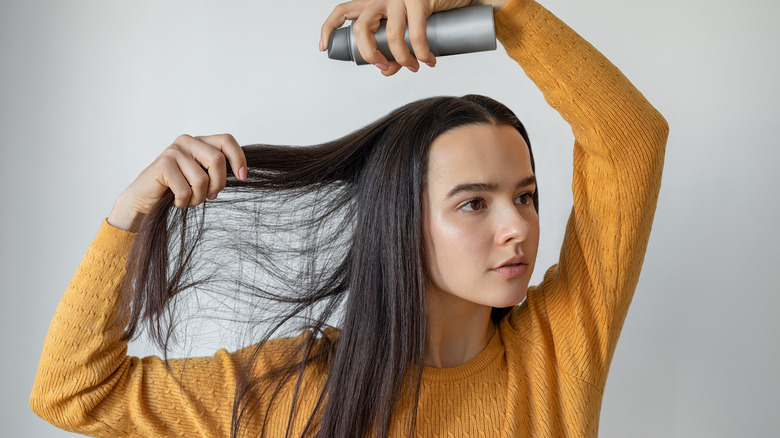Yamadura Mini Refillable Perfume Portable Atomizer Bottle Refillable Perfume Spray, Refill Pump Case for Traveling and Outgoing (5ml, 4 Pack) 4
$8.99 (as of April 24, 2025 06:56 GMT +00:00 - More info)Long flights can be particularly difficult for those who struggle with flying anxiety. Whether you experience intense fear or just mild nervousness, there are certain seats on the plane that may help soothe your worries, especially if you hate turbulence. According to former easyJet flight attendant Matt, sitting as close to the front of the plane as possible can minimize the shaking and bumps felt during rough air. Airplane pilot Kyle Koukol also recommends sitting in the front or just over the wing for a smoother ride. Additionally, sitting by the window can provide a steady view of the plane’s surroundings, which may help reduce anxiety. However, sitting near the aisle offers easy access to assistance from the cabin crew when needed. If your biggest fear is surviving a crash, sitting in the back or near an emergency exit can increase your chances. Overall, choosing the right seat can play a significant role in making your flight more comfortable and enjoyable.
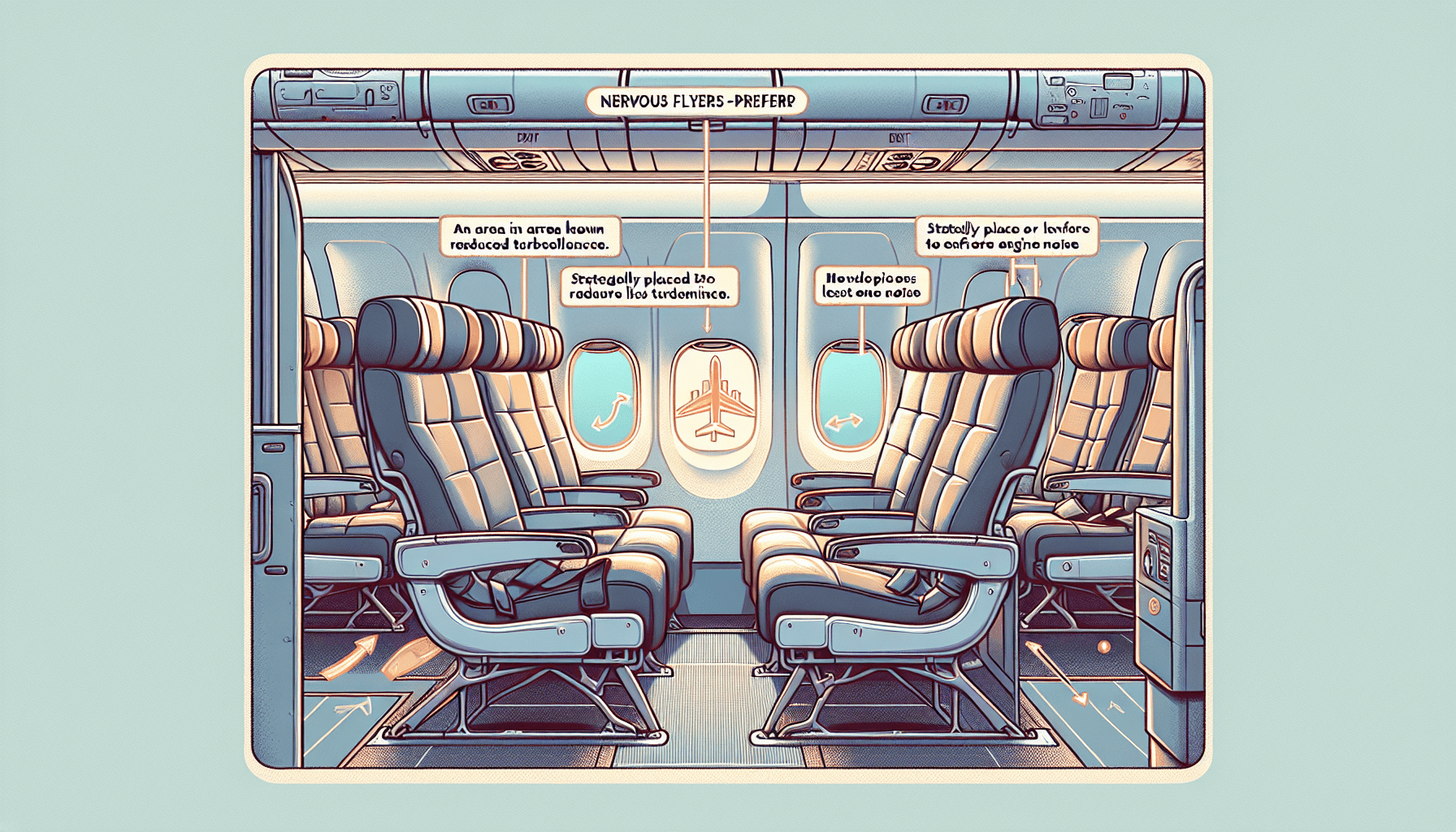
Shop These Accessories for a Comfortable Trip
Choosing a seat near the front
When it comes to choosing the best seat on a plane for nervous fliers, sitting near the front can offer some advantages. One reason is that there tends to be less turbulence near the front of the aircraft. According to a former easyJet flight attendant named Matt, sitting close to the front can help minimize the feeling of turbulence for those who are nervous flyers. This is because turbulence is often felt more towards the back of the plane. So, if you’re prone to anxiety during turbulence, opting for a seat near the front might be a good choice.
Another benefit of sitting near the front is that you can disembark sooner once the plane reaches its destination. It can be a relief to get off the plane and be done with the journey, especially for those who have flying anxiety. By choosing a seat near the front, you can avoid the long wait that comes with being seated towards the back of the plane. This can also help reduce any anxiety related to being in a confined space for an extended period of time.
Considering the aisle or window seat
The debate between aisle seats and window seats is a common one among travelers. However, for nervous fliers, there are specific benefits to consider when choosing between the two.
Sitting by the window can be beneficial for those who experience motion-related distress. By having a steady view of the plane’s surroundings, such as the horizon during take-off, it can help provide a better sense of any movements and potentially ease anxiety. Additionally, a 2014 survey conducted by easyJet found that nervous fliers were more likely to opt for window seats, suggesting that the view can have a comforting effect.
On the other hand, there are advantages to sitting near the aisle as well. One main benefit is having easy access to the aisle, which can help reduce feelings of claustrophobia and provide a sense of roominess. Being near the aisle also allows for quick access to assistance from the cabin crew if needed, which can provide emotional support for nervous fliers throughout the flight.
Shop These Accessories for a Comfortable Trip
Surviving a plane crash
For some nervous fliers, the fear of dying in a plane crash outweighs any other concerns. When it comes to seat selection, there are factors to consider that may impact survival rates in the event of an accident.
According to a study by TIME, passengers sitting in the back third of the aircraft had the highest chance of survival during a crash, while those in the middle were more likely to succumb to the accident. However, it is important to note that the majority of passengers, regardless of seating location, actually survived their accidents.
Seating near an emergency exit can also play a role in survival rates. Exit-row seats not only provide more legroom, which can alleviate anxiety related to small spaces, but they are also located next to the emergency exits, allowing for a quick escape if needed. However, it is essential to be capable of operating the escape latch if seated in an exit row. If not, choosing a seat just behind the exit row can still provide easier access in case of an emergency.
Avoiding middle seats
For nervous fliers, middle seats may not be the ideal choice. Many people experience discomfort and anxiety when confined in the middle seat, especially during long flights. The lack of easy access to the aisle and limited personal space can contribute to feelings of claustrophobia and unease.
To alleviate this discomfort, it is recommended to avoid middle seats whenever possible. Instead, opt for either an aisle or window seat, depending on personal preferences and the specific benefits each offers for individual anxieties.
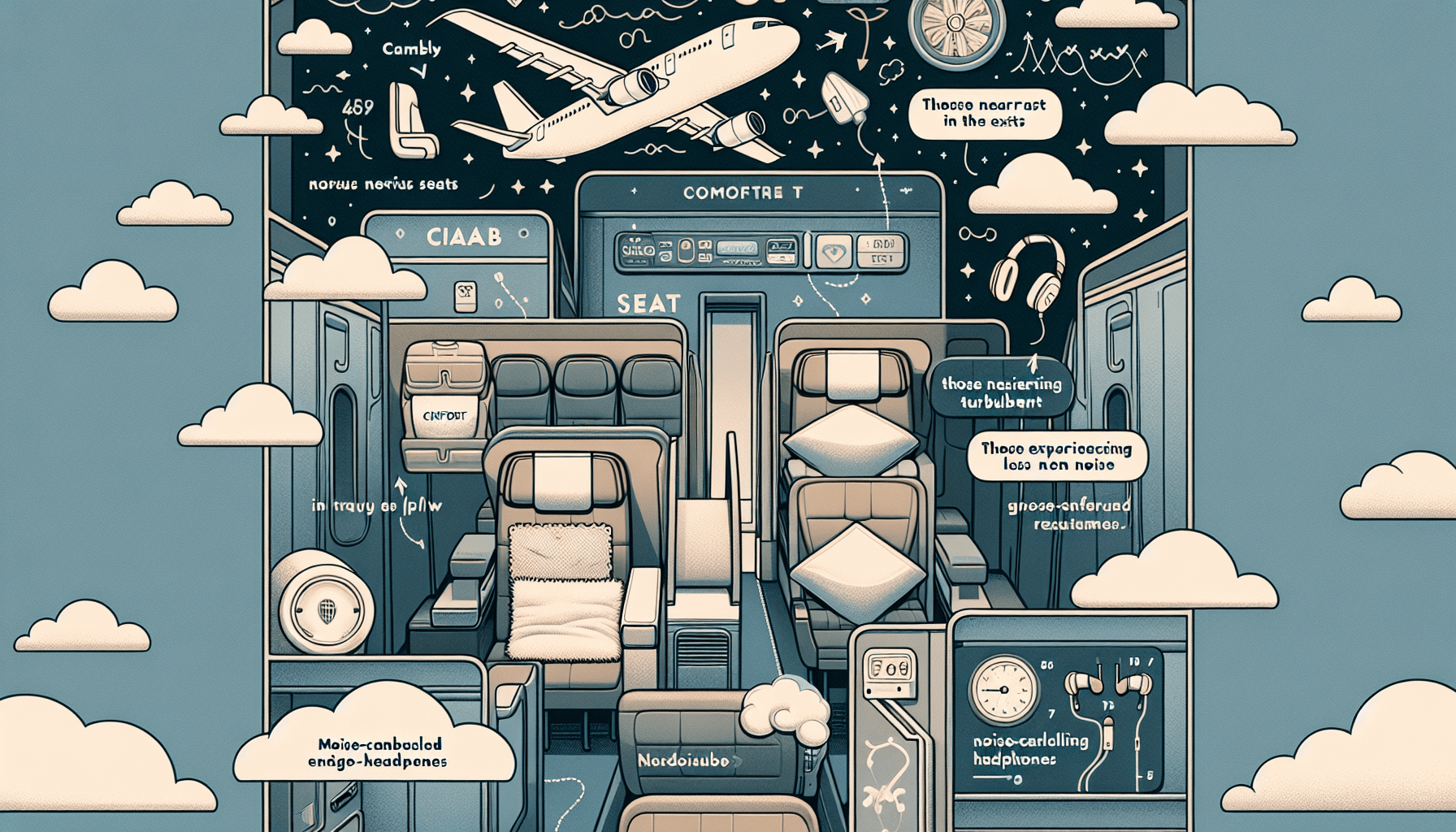
Considering the size and layout of the aircraft
The size and layout of the aircraft can have an impact on the overall flying experience for nervous fliers. Choosing the right aircraft type can help create a more comfortable and soothing environment.
Larger aircraft tend to offer more stability and smoother flights. The increased size helps to mitigate the effects of turbulence, making the overall journey less bumpy for nervous fliers. If possible, selecting a seat on a wide-body aircraft can provide additional benefits due to its larger size and capacity.
Conversely, small aircraft, such as regional jets, may amplify the feeling of turbulence and motion, which can heighten anxiety for those with a fear of flying. If given the option, it is advisable to avoid smaller aircraft and choose flights on larger planes.
Being aware of the aircraft’s noise level
The noise level on an aircraft can also affect anxiety levels for nervous fliers. Loud engine noises, in particular, can contribute to heightened stress and unease during the flight.
Choosing a seat away from the engines can help reduce the impact of noise on anxiety levels. Seats towards the front of the aircraft tend to have less engine noise, making them more suitable for those who are sensitive to loud sounds. By opting for a seat away from the engines, nervous fliers can create a calmer and more peaceful environment during the flight.
Additionally, using noise-canceling headphones can further diminish the impact of noise and provide a more serene experience. These headphones can help block out engine sounds and other disturbances, allowing passengers to focus on relaxation and comfort.
Taking advantage of extra legroom
Extra legroom can be a valuable asset for nervous fliers. The additional space can alleviate feelings of confinement and claustrophobia, providing a more comfortable and relaxed experience.
When selecting seats, it is worth considering options with extra legroom. Certain seats, such as those in the exit rows, typically offer more legroom due to safety requirements. These seats not only provide physical comfort but can also contribute to a sense of security and ease for nervous fliers.
If budget allows, considering an upgrade to premium economy or business class can also provide benefits in terms of extra legroom and overall comfort. These seating options often offer a more luxurious and spacious experience, allowing nervous fliers to have a smoother journey.
Selecting seats away from high-traffic areas
Navigating through crowded aisles and dealing with constant movement can be stressful for nervous fliers. Selecting seats away from high-traffic areas can help minimize this stress and create a more peaceful environment.
Avoiding seats near bathrooms or galleys can be beneficial for reducing noise and disturbance. These areas tend to experience higher foot traffic and can be noisy and disruptive during the flight. By choosing seats away from these areas, nervous fliers can enjoy a quieter and more tranquil experience.
Additionally, selecting seats in quieter sections of the plane can further enhance comfort and relaxation. Certain areas, such as the front of the aircraft or sections near the wings, tend to be quieter and offer a more secluded atmosphere. Choosing seats in these areas can help create a sense of calm and minimize distractions for nervous fliers.
Considering the time of day and direction of travel
The time of day and direction of travel can also influence the flying experience for nervous fliers. By taking these factors into account, it is possible to optimize seat selection for a more comfortable journey.
Daytime flights are often preferred by nervous fliers as they provide better visibility and a sense of being in control. The abundant natural light and ability to see outside the aircraft can help alleviate anxiety and create a more soothing atmosphere. If given the choice, opting for a daytime flight can be beneficial for those with flying anxiety.
Additionally, considering the direction of travel can make a difference in seat selection. For example, some nervous fliers find morning or night flights more preferable due to lower passenger volume and potential quieter surroundings. By choosing flights during less crowded times, nervous fliers can have a more serene and relaxed experience onboard.
Using online seat selection tools and resources
When it comes to selecting the best seat on a plane, utilizing online seat selection tools and resources can be highly advantageous. These tools provide valuable information and insights that can help inform seat decisions for nervous fliers.
Seat selection tools allow passengers to view seat maps and choose seats based on their preferences and specific needs. These tools often provide details on legroom, proximity to amenities, and other factors that can impact comfort during the flight. By using these tools, nervous fliers can easily identify and select seats that align with their comfort requirements.
Additionally, researching seat reviews and recommendations can offer valuable insights into the experiences of fellow nervous fliers and experts. Online forums and travel websites often feature seat reviews and recommendations that can help guide the decision-making process. Consulting with these resources can provide a wealth of information and help nervous fliers make informed seat selections.
Ultimately, by considering various factors such as seat location, aircraft size, and noise level, nervous fliers can optimize their seat selection and create a more comfortable and reassuring flying experience. With the right seat, the skies can become a more manageable and enjoyable place for those with flying anxiety.



